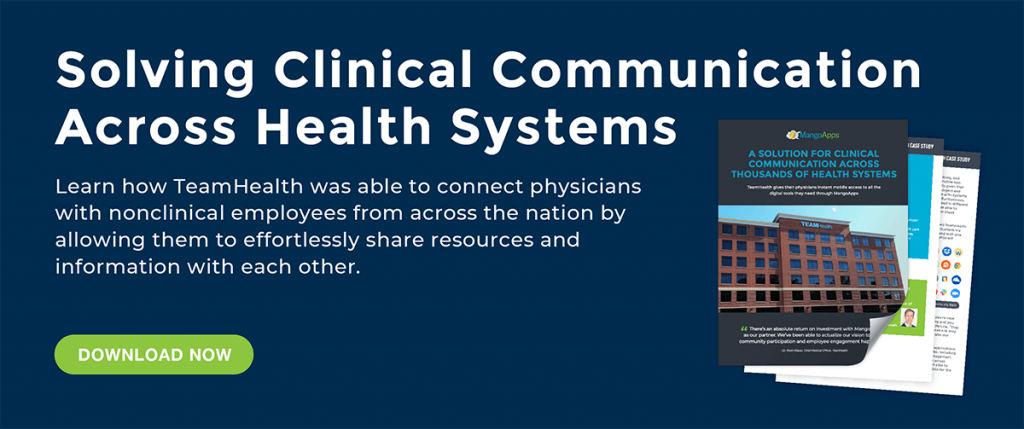Hospital recognition programs have the potential to revolutionize the healthcare environment, creating a culture of gratitude, motivation, and excellence. These programs are not just about acknowledging individual professional achievements. Rather, they foster a system-wide spirit of collaboration, commitment, and high-quality care.
Recognition programs are pivotal in reinforcing the hard work of doctors, nurses, and administrative staff, enhancing job satisfaction and reducing staff turnover. By celebrating achievements, organizations can demonstrate their appreciation for the relentless efforts of their staff, especially amidst challenging situations.
Moreover, these programs serve as a powerful tool for motivating employees to strive for excellence in their roles. They instill a sense of pride and accomplishment, leading to increased productivity and a more positive work environment. This results in higher patient satisfaction ratings and, ultimately, better patient outcomes.
Implementing hospital recognition programs is a strategic move that can significantly boost the morale and productivity of healthcare professionals. Health systems who do this well experience more robust patient care and a healthier bottom line.
Understanding Hospital Recognition Programs
Hospital recognition initiatives acknowledge and reward the contributions of employees in a healthcare setting. These programs can take various forms, from employee-of-the-month awards to bonuses for exceptional performance, longevity recognition, and team-based acknowledgments.
A well-implemented recognition program is not simply about offering rewards. It is about cultivating an environment that encourages and recognizes excellence, creating a sense of belonging and shared purpose among the staff. When you motivate individuals to go above and beyond, you create a more dynamic, efficient, and effective health system.
Recognition programs in hospitals are also key to showcasing role models within the organization. By highlighting the exemplary work of individuals or teams, others are inspired to emulate their actions, thereby promoting best practices throughout the facility. These programs can also help to identify leaders among the staff, encouraging their growth and development within the organization.
Hospital recognition programs can also be leveraged to enhance patient care. When healthcare professionals feel valued, they are more likely to invest more in their patient interactions, translating to improved patient experience and outcomes.
In essence, hospital recognition programs are not just ‘nice-to-have.’ They are a ‘must-have’ for any forward-thinking healthcare institution.

The Rising Need for Recognition in the Healthcare Sector
The rapidly evolving dynamics of the healthcare sector underscore the critical need for effective recognition programs. With mounting pressure to provide high-quality care amidst resource constraints, healthcare professionals are often pushed to their limits. Recognition programs can serve as a powerful antidote, fostering a culture that values each individual’s contributions and promotes a healthy work-life balance.
The Challenge of Turnover
One of the pressing challenges in the healthcare sector today is managing staff turnover. A high turnover rate can disrupt continuity of care and lead to significant financial costs due to the need for constant recruitment, training, and onboarding. Recognition programs can address this issue head-on by improving employee retention. When staff feel valued and appreciated, they are more likely to demonstrate loyalty to the organization.
The pandemic clearly demonstrated the importance of recognition in healthcare. As healthcare professionals continued to provide essential services despite personal risk and unprecedented challenges, the need for recognition was more significant than ever. Implementing robust recognition programs sends a clear message to these professionals: their courage, resilience, and dedication have not gone unnoticed.
In the face of an ever-aging population, the demand for healthcare services is on the rise, putting increased pressure on clinical teams. Recognizing the signs of burnout is crucial so you can stay ahead of issues. Recognition programs can help ease this added burden by boosting morale, increasing job satisfaction, and promoting a culture of excellence and compassion at work.
The Role of Technology
Lastly, advancements in technology and increased patient expectations push healthcare organizations to innovate, improve, and excel. Recognition programs can play a pivotal role in this by encouraging employees to strive for innovation and excellence in their roles, ultimately leading to improved patient care and satisfaction.
In summary, hospital recognition programs are not just beneficial—they’re essential in today’s healthcare environment. They play a crucial role in addressing burnout, reducing turnover, motivating employees, and promoting a culture of excellence and compassion. As such, any healthcare organization aiming to thrive in this challenging landscape should consider implementing a comprehensive recognition program as a key part of their strategic plan.
For other ways to address these issues, see our list of healthcare employee engagement ideas.
Key Elements of Effective Hospital Recognition Programs
In designing an effective hospital recognition program, certain key elements must be incorporated to ensure its success. These elements are the foundation upon which the program is built, and they are pivotal in shaping an environment that fosters recognition, appreciation, and a culture of excellence.
Personalization
Personalization is an integral aspect of a successful hospital recognition program. It is crucial to acknowledge each employee’s unique contributions in a manner that reflects their individual accomplishments. Personalizing recognitions can range from acknowledging the specific characteristics of an employee’s achievement to tailoring the reward itself to the employee’s preferences or needs.
This approach demonstrates a genuine appreciation for the employee’s contributions and assures them that their efforts are valued. Moreover, personalized recognition strengthens the employer-employee relationship, fostering a deeper sense of connection and belonging within the organization.
Regularity
Maintaining regularity in the recognition program is equally important. Consistency in acknowledgements not only assures the continuity in morale boost but also instills a sense of reliability among the employees. It’s crucial to remember that recognition should not be confined to annual or quarterly events but needs to be embedded into the everyday culture of the hospital.
Regular recognition, whether it’s acknowledging an employee’s long hours during a particularly challenging week or celebrating a team’s successful project completion, keeps morale high and reinforces the organization’s commitment to valuing its employees.
Visibility
Visibility is another cornerstone of an effective recognition program. Public appreciation holds significant power to motivate not just the recipient but also the wider team. Celebrating achievements across the organization not only enhances the recipient’s sense of pride but also sets a benchmark of excellence for others to aspire towards.
Additionally, public recognition fortifies the culture of appreciation, making it a shared value rather than an isolated managerial task.
Feedback Loop
Lastly, establishing a feedback loop is crucial for the continual evolution and enrichment of the recognition program. This involves creating an environment where staff members can openly discuss the recognition program, voice their thoughts, and suggest improvements.
Such a feedback loop ensures that the program keeps evolving according to the changing needs and preferences of the employees, reinforcing its relevance and effectiveness in the long term. By incorporating employees’ input into the program, the organization also reinforces its commitment to valuing its employees’ perspectives and fostering a participative culture.

Boosting engagement at Columbia Basin Health Association
Learn how CBHA got over 90% user adoption and improved staff alignment with MangoApps
The Role of Technology in Hospital Recognition Programs
Digital transformation is a hot topic in healthcare today, and plays a significant role in shaping and enhancing hospital recognition programs. It facilitates numerous aspects of these programs, including automation, integration, and analytics, ultimately enabling a more efficient, impactful, and sustainable program.
Automation
When it comes to recognition programs, automation is a game-changer. It streamlines the process of recognition, ensuring that no deserving employee goes unnoticed. For instance, automated systems can track key performance indicators and trigger recognition when certain criteria are met. This approach not only eliminates bias but also ensures that recognition is timely and consistent. Automation also eases the administrative burden of managing a recognition program, freeing up time for healthcare administrators to focus on other strategic tasks.
Integration
Integration is another crucial aspect where technology can greatly enhance a recognition program. By integrating the recognition program with other systems, such as HR and payroll systems, the process becomes seamless and interconnected. For example, recognitions can be directly linked to performance evaluations or professional development plans, aligning individual achievements with organizational goals. Moreover, integration helps in maintaining a comprehensive record of recognitions, providing valuable data for performance reviews and career development discussions.
Analytics
Analytics brings a data-driven approach to recognition programs. With analytics, healthcare organizations can gain insights into the effectiveness of their recognition program. They can track key metrics such as frequency of recognition, types of recognition awarded, and correlation with employee performance and satisfaction levels. These insights can guide strategic decisions about the program, such as identifying areas of improvement and understanding what types of recognition are most appreciated by employees. Furthermore, analytics can help in measuring the impact of the recognition program on broader organizational outcomes, such as employee retention, patient satisfaction, and overall performance.
By implementing technology in hospital recognition programs, healthcare organizations can significantly enhance the effectiveness, efficiency, and impact of these programs. The combination of automation, integration, and analytics ensures that recognition programs are robust, dynamic, and aligned with the organization’s strategic goals, thereby promoting a culture of excellence and compassion in the healthcare setting. Learn more about how MangoApps is the perfect employee app for any health system.
Benefits of a Well-Implemented Recognition Program
A well-orchestrated recognition program offers a multitude of benefits, with the results speaking for themselves. Numerous hospitals have reported tangible and significant outcomes upon the implementation of such programs.
Increased Employee Retention
One of the primary benefits of effective hospital recognition programs is higher employee retention rates. Recognizing the hard work and dedication of employees makes them feel valued and appreciated. This emotional reward often translates into a greater sense of loyalty and a lower likelihood of seeking employment elsewhere.
Elevated Morale and Patient Satisfaction
Recognition programs also have a direct impact on morale within the hospital. When employees feel valued, their engagement and productivity levels increase. This enhanced morale often translates into better patient care, leading to higher patient satisfaction scores. When patients see happy, satisfied employees, their trust in the care they receive increases.
Positive Work Environment
Recognition programs create a work environment that is not only positive but also encourages innovation and interdisciplinary collaboration. When employees feel appreciated, they are more likely to take risks and think outside the box, resulting in innovative solutions and improvements in patient care and hospital operations.
Attracting Top Talent
Lastly, effective recognition programs can help enhance a hospital’s reputation as a preferred employer. When a hospital is known for recognizing and valifying its employees, it becomes a magnet for top talent in the healthcare realm. The best healthcare professionals gravitate towards organizations where they know their efforts will be appreciated and rewarded.
In conclusion, the implementation of a comprehensive and effective recognition program is an investment that leads to numerous benefits for both the employees and the hospital as a whole. Its impact is far-reaching, enhancing every facet of hospital operations from employee satisfaction to patient care.
Steps to Start or Revamp Your Hospital’s Recognition Program
If you’re considering initiating or refining your hospital’s recognition strategy, here are some steps to guide you:
- Conduct an honest assessment of your current program.
- Define clear goals and objectives.
- Engage staff for their insights and suggestions.
- Use technology to streamline and enhance the process.
- Continuously monitor, measure, and iterate for maximum impact.
Conclusion
For health systems aiming for excellence, investing time, effort, and resources in hospital recognition programs isn’t just a good idea; it’s a commitment to excellence.
Resources like MangoApps enable teams like yours with all the tools they need to not only run these programs, but ensure that this information makes it to clinical staff, alongside all of the other job-critical resources they struggle to find today. To learn more, read about our healthcare offering, or how to build a HIPAA-compliant intranet.







